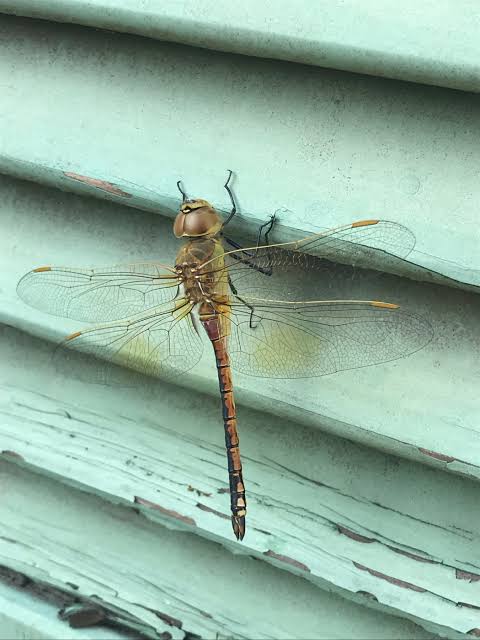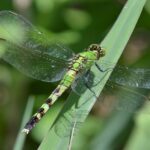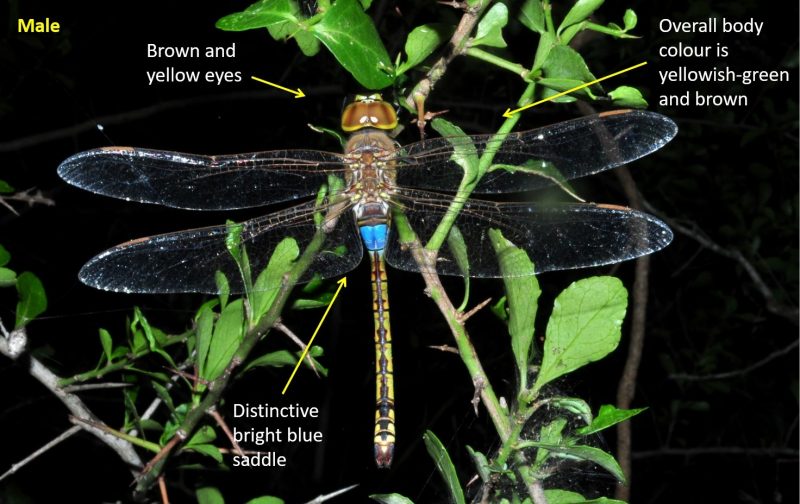
Length: From 61 to 70 mm. Hindwing spam: From 43 to 48 mm.
Male: 1. Two black bold lines on the frons. 2. The upper part of the eyes is brown and the lower green. 3. Brown thorax. 4. Only the upper part of the S2 is blue, and this colour spreads up to the middle of the sides. 5. Abdomen is light brown or yellowish with a black stripe that stretches across it. 6. Long pointed anal appendages. 7. There is ayellow spot on the hindwing. Female:They are similar to males in patterns,but S2 is normally duller and the blue colour on S2 is not as bright or it doesnot exist. There is a black stripe that goes across the abdomen. (8)
HABITAT
It can be found in all kinds of habitats, whether they are bodies of water or not, as this is a migratory species. It is unknown if there is a breeding spot this species has in the Province of Málaga, but they are likely to mate in standing water bodies with plenty of vegetation on the riverbank (above all rushes and bulrushes). These can be perennial or temporary, such as small reservoirs and dams, artificial ponds, deserted quarries and polls in rivers and streams.
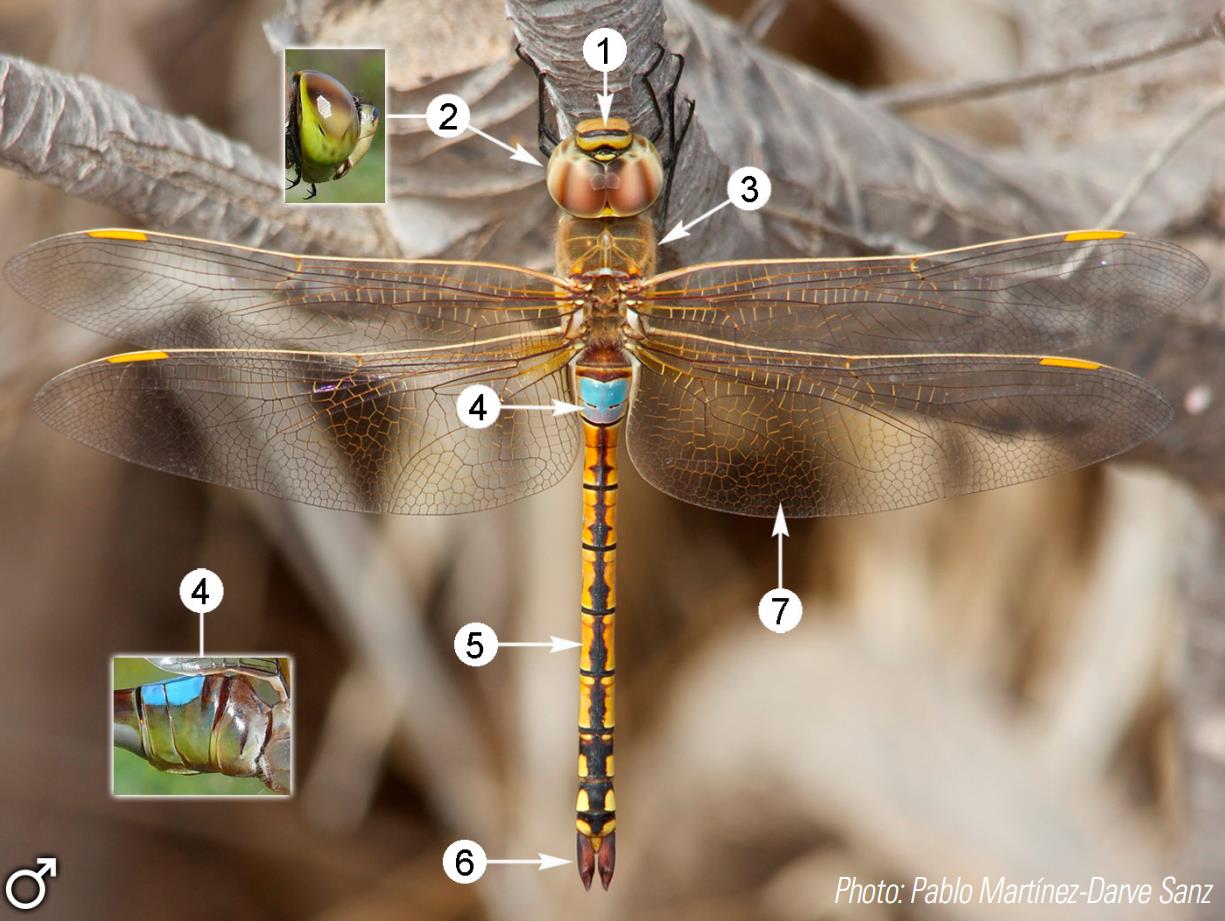
Description and habitat
It is a large dragonfly with greenish-yellow eyes. Its thorax is olivaceous-brown, paler on sides. Wings are transparent with an amber-yellow patch. Abdomen is ochreous, marked with azure-blue and reddish-brown. Segment 2 is bright blue on dorsum, in males (pale grey-blue in females) and pale green on the sides. Segments 3 to 7 are olivaceous-yellow with irregular reddish-brown stripes on mid-dorsum and narrow black apical annules. There is a broad mid-dorsal blackish-brown stripe on segments 8 and 9, enclosing a pair of triangular yellow apical spots. Segment 10 is bright yellow, with its base and mid-dorsum broadly black. Female is otherwise similar to the male.
Its natural habitats are shrub-dominated wetlands, swamps, freshwater lakes, intermittent freshwater lakes, freshwater marshes, intermittent freshwater marshes, and freshwater springs. It breeds in shallow tanks and marshes.A rare long-distance migrant to the British Isles, occasionally seen even in winter.
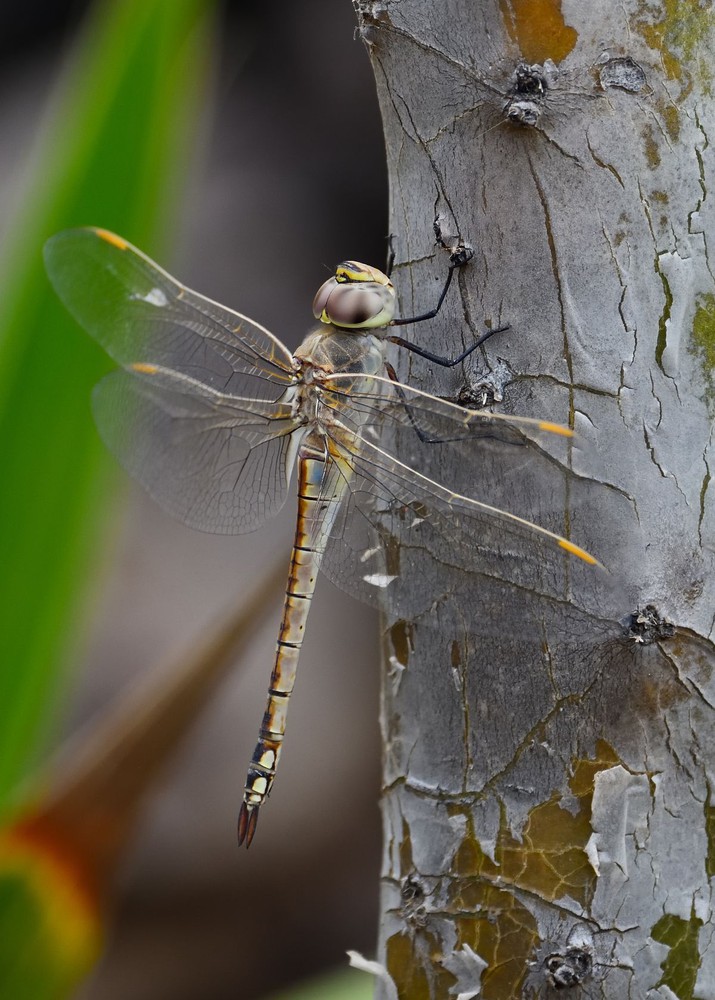
It is found in Algeria, Angola, Botswana, Cameroon, Chad, the Democratic Republic of the Congo, Ivory Coast, Egypt, Equatorial Guinea, Ethiopia, Gambia, Ghana, Kenya, Madagascar, Malawi, Mauritania, Mauritius, Morocco, Mozambique, Namibia, Niger, Nigeria, São Tomé and Príncipe, Senegal, Seychelles, Somalia, South Africa, Sri Lanka, India, Sudan, Tanzania, Togo, Uganda, United Arab Emirates, Zambia, Zimbabwe, and possibly Burundi. Recorded in Malta in 1957, and every few years since, where it is seen migrating in large numbers. It has never been recorded breeding in the Maltese archipelago. It is increasingly being recorded in coastal Southern England and up to 10 miles (16 km) inland – one was seen at Knepp Wildland on 17 November 2021 (the 5th confirmed record for that year[citation needed]).
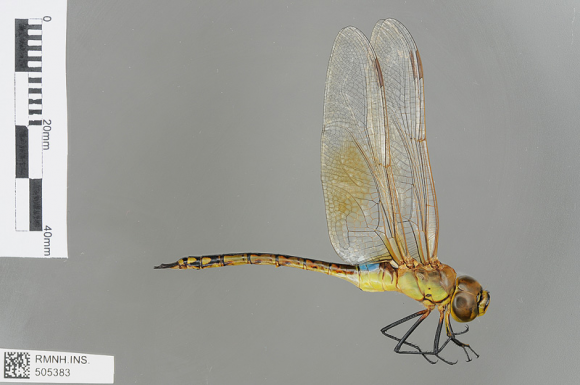
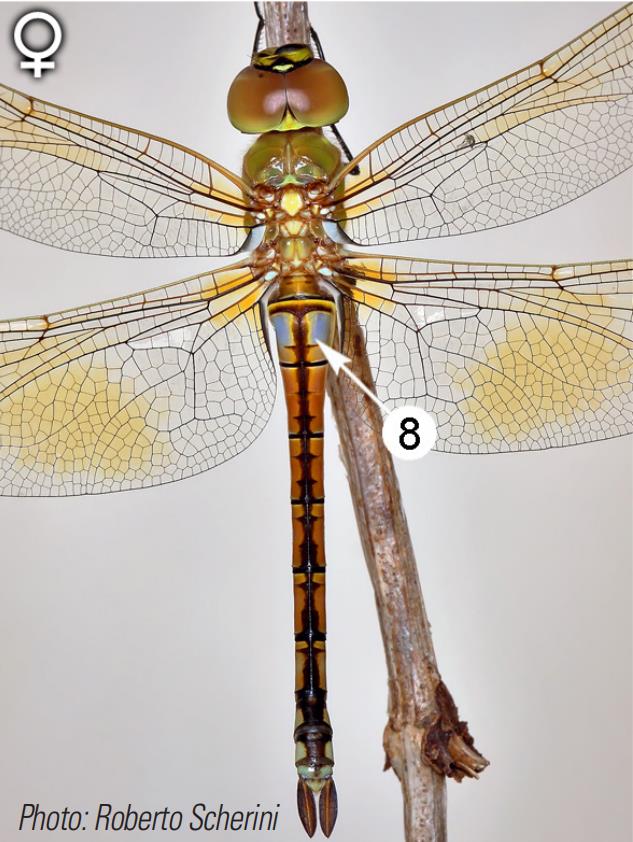
Anax ephippiger (Burmeister, 1839) – Vagrant Emperor
NL: Zadellibel | DE: Schabracken-Königslibelle | FR: Anax porte-selle
Anax ephippiger (Vagrant Emperor, previously in Hemianax) is the smallest of the European emperors. The species usually reproduces in southern Europe on a small scale. The majority of the European sightings concern migrants from Africa and the Middle East. Vagrant Emperors may migrate north along the coasts of Western Europe to the British islands even in winter. The first ever dragonfly found on Iceland was a Vagrant Emperor.

